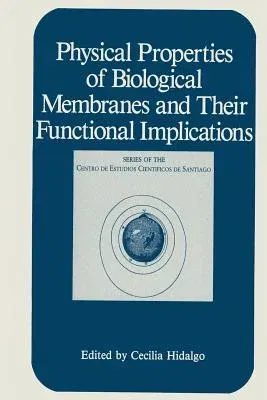Physical Properties of Biological Membranes and Their Functional Implications (Softcover Reprint of the Original 1st 1988)Paperback - Softcover Reprint of the Original 1st 1988, 7 May 2013

Qty
1
Turbo
Ships in 2 - 3 days
In Stock
Free Delivery
Cash on Delivery
15 Days
Free Returns
Secure Checkout
Part of Series
The Centro de Estudios Científicos
Part of Series
Series of the Centro de Estudios Cientificos
Part of Series
Series of the Centro de Estudios Científicos
Print Length
236 pages
Language
English
Publisher
Springer
Date Published
7 May 2013
ISBN-10
1461282535
ISBN-13
9781461282532
Description
Product Details
Book Edition:
Softcover Reprint of the Original 1st 1988
Book Format:
Paperback
Country of Origin:
NL
Date Published:
7 May 2013
Dimensions:
22.86 x
15.24 x
1.35 cm
ISBN-10:
1461282535
ISBN-13:
9781461282532
Language:
English
Location:
New York, NY
Pages:
236
Publisher:
Series:
Weight:
340.19 gm

